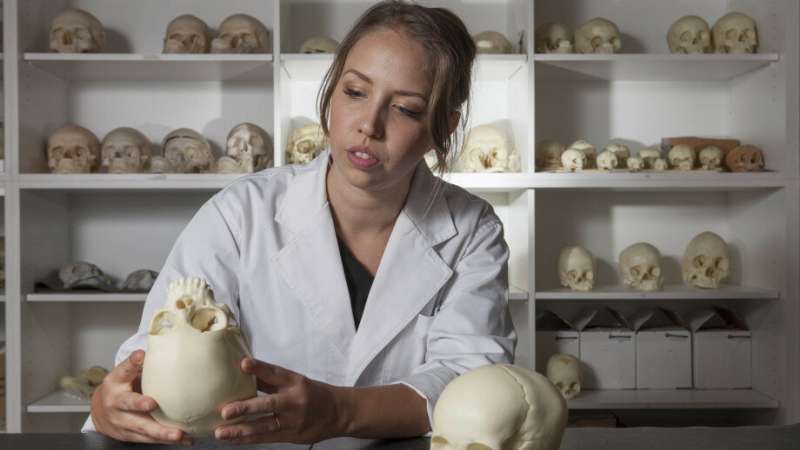Lead researcher Clare McFadden, a PhD Scholar with the ANU School of Archaeology and Anthropology. Credit: Australian National University
Researchers at The Australian National University (ANU) have developed the first method for determining maternal mortality rates in prehistoric populations based on archaeological records.
Until now there has been no way to measure how many women died in pregnancy or shortly after childbirth prior to modern record keeping.
Lead researcher Clare McFadden, a Ph.D. Scholar with the ANU School of Archaeology and Anthropology said she hopes this new method will lead to a renewed research focus on women throughout prehistory.
"What is really exciting is that this method will open up the door to studies we never thought were possible," Ms McFadden said.
"It helps to shift the focus of archaeology more towards women.
"We have a lot of work on the male experience, including warfare, but now we can look at some of the female experiences, like what it was like to be a pregnant woman and new mother throughout prehistory."
The restriction for this field of study has always been a lack of any way to determine whether someone died from complications of childbirth based on skeletal remains.
To get around this problem, the researchers' looked at the population age-at-death distribution and maternal mortality rates in 46 modern populations.
"We looked at how many women were dying compared to men during the child-bearing years, to see if the difference lined up with the maternal mortality rate for that population," she said.
"We found there was a really strong correlation, which gave us confidence that it was a good predictor of maternal mortality rates that could be applied to other populations."
Ms McFadden said the new method had the potential to open up a range of new research topics that have never been possible until now.
"The first thing that we are doing is looking at how the health of women contributes to their risk of dying during childbirth," she said.
"So if it's a healthy population do we see less deaths?
"If a population has unexpectedly low maternal mortality rates, then we have to ask why. Did people have better skills at delivering babies? Or better care for pregnant women?"
The study from which the new research method was developed is being published in a paper in the journal Current Anthropology.
More information: Clare McFadden et al. The Paleodemographic Measure of Maternal Mortality and a Multifaceted Approach to Maternal Health, Current Anthropology (2019). DOI: 10.1086/701476
Journal information: Current Anthropology
Provided by Australian National University






















